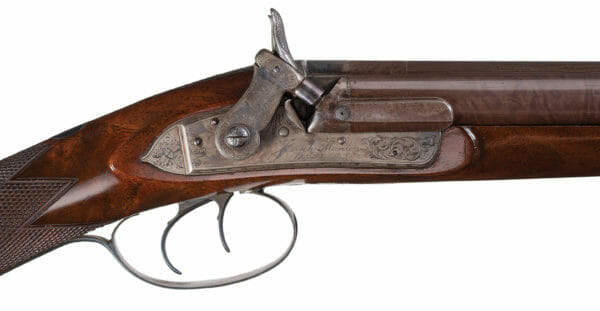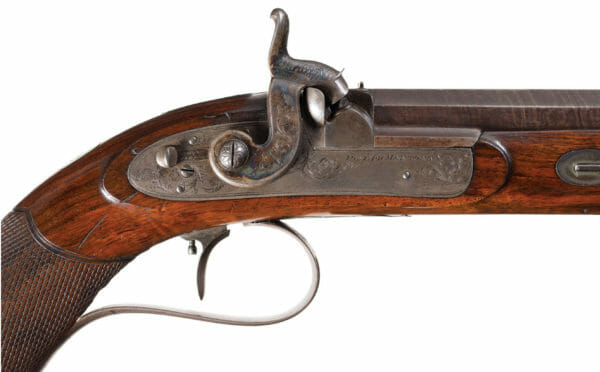
England -(AmmoLand.com)- On April 6, 1766, Joseph Manton was born in Grantham, England. At the age of 15, Joseph was apprenticed to his older brother John, who was a gunsmith in London.
By the time he was 23, Joseph had opened up a gun shop of his own. His brother John made quality guns, to be sure, but he would soon be eclipsed by his younger brother.
It wasn’t long before his talents were noticed by the government in the 1790s. Soon, Joseph obtained a Royal Warrant and began working with the Board of Ordnance on new artillery designs. At the same time, his shop continued to produce approximately 100 guns a year, being a mix of sporting arms (shotguns) and dueling pistols. Today, his examples of both are highly prized by collectors.
Gunsmith Joseph Manton came along at an interesting time in arms development.
Flintlock technology had been firmly rooted for quite some time, but it was about to be eclipsed by percussion ignition, and Joseph lent his talents to that transitional period. After Reverend Forsyth came up with the first percussion system using his scent-bottle locks, Manton improved upon it with his tube lock system.

His system concentrated the fulminate into single-use pellets that were crushed by the hammer and subsequently ignited the powder charge. This made it much more convenient to store and reload a firearm. Eventually, this would give way to the more familiar percussion cap that dominated the ignition system’s lifespan.
Around this same time, Joseph ran into financial troubles relating to the artillery designs he was developing with the Board of Ordnance. He wanted to be paid the agreed-upon £30,000 in a one-lump-sum payment. The government, however, didn’t want to part with such a large sum all at once – today being the equivalent of more than £500,000.
Manton’s artillery design consisted of a projectile being seated in a wooden cup that would grip the rifled grooves in a cannon barrel. The sack containing the powder charge was attached to the wooden cup, allowing both to be loaded at the same time. This powder-projectile combination helped give rise to modern breechloading designs, but it also bankrupted him. By 1826, he was out of business; two years later, he was in debtor’s prison. Manton served his time and was released in 1829.
His son, John Augustus Manton, carried on the family business and legacy, operating under the name “Joseph Manton & Son.”

When Joseph Manton died in 1835 at the age of 69, he was a free – yet broke – man who would never know the true extent of his influence in the arms industry. During the years his shop was in operation, it employed the likes of James Purdey, Thomas Boss, William Greener, Charles Lancaster, and William Moore, all of whom went on to become part of the “who’s who” in the world of fine English arms.
Manton’s family realized his importance. Upon his grave is the following epitaph:
“… an everlasting monument to his unrivalled genius, is already established in every quarter of the globe, by his celebrity as the greatest artist in fire arms that ever the world produced, as the founder and the father of the modern gun trade, and as a most scientific inventor in other departments, not only for the benefit of his friends and the sporting world, but for the good of his King and Country.”
About Logan Metesh
Logan Metesh is a historian with a focus on firearms history and development. He runs High Caliber History LLC and has more than a decade of experience working for the Smithsonian Institution, the National Park Service, and the NRA Museums. His ability to present history and research in an engaging manner has made him a sought after consultant, writer, and museum professional. The ease with which he can recall obscure historical facts and figures makes him very good at Jeopardy!, but exceptionally bad at geometry.
